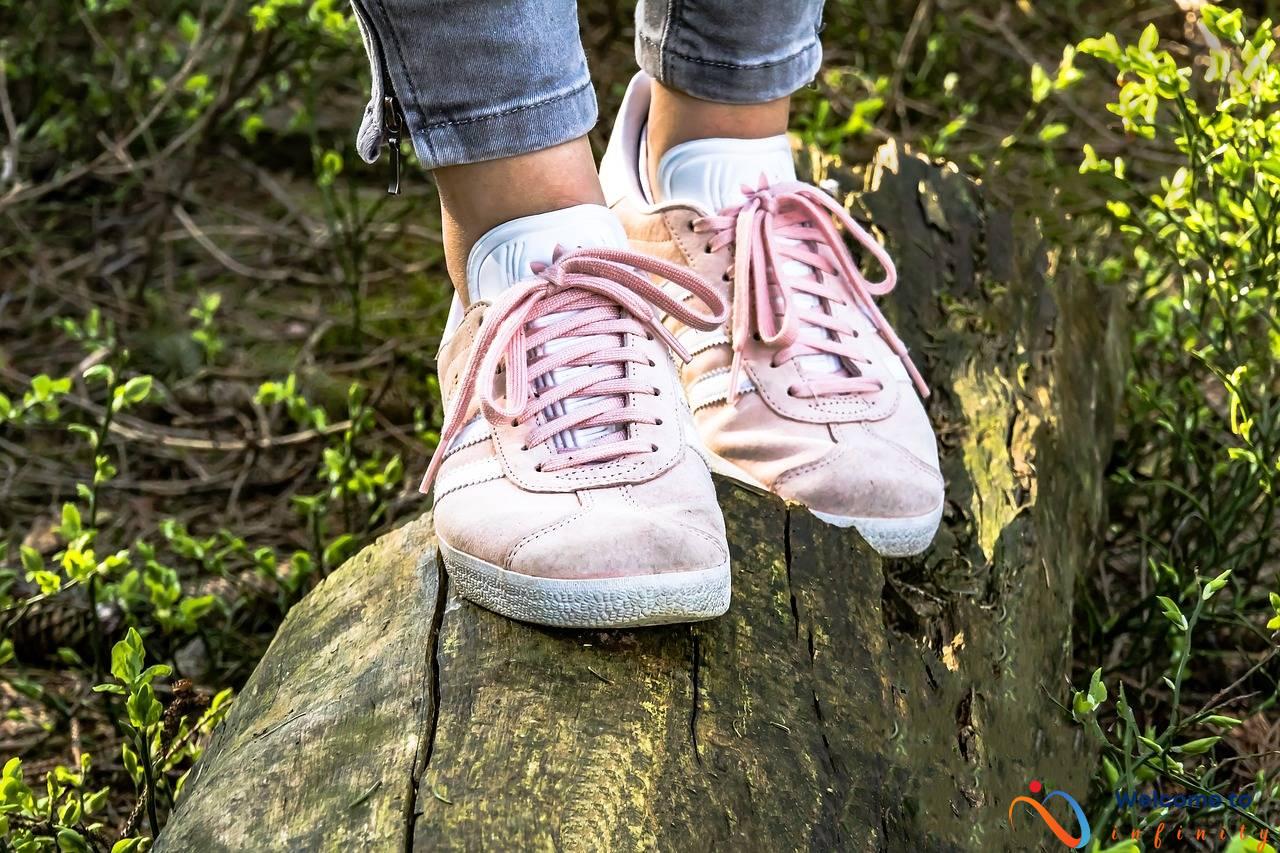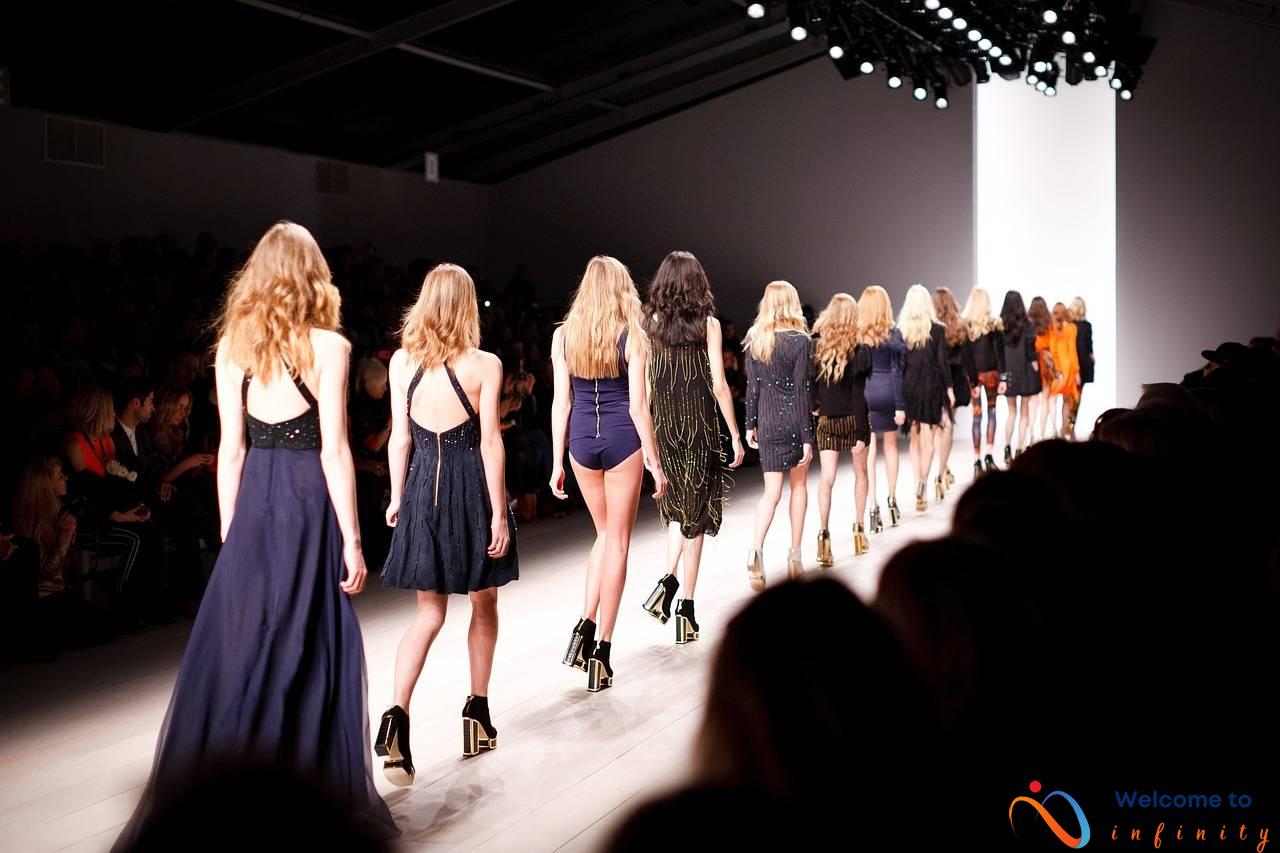The fashion industry, like many others, faced unprecedented challenges during the Covid-19 pandemic. Large-scale events, including fashion week, were cancelled or indefinitely postponed in many parts of the world. However, the industry proved to be remarkably resilient; adapting, innovating, and finding new ways to showcase the work of designers while keeping everyone safe.
One of the most significant changes was the rise of virtual runways and digital fashion shows. This allowed designers to showcase their collections to a global audience while adhering to social distancing guidelines. Technology played a vital role in creating a unique experience that provided an opportunity for designers to showcase their work in innovative and creative ways.
Another significant shift was the move towards more localized fashion events. In some countries, fashion weeks were held in smaller venues to minimize the risk of spreading the virus. This approach provided an opportunity for designers and consumers to interact on a more personal level and enabled greater participation in fashion events throughout the region.
The pandemic also led to greater inclusivity and diversity in the industry. The rise of conscious fashion and sustainable practices became an integral part of fashion week events. Many designers focused on creating smaller, more sustainable collections that also were inclusive and represented all body types and cultures. This shift towards more conscious fashion helped to establish the industry's commitment to creating a more equitable and just future.
Fashion brands and designers also adapted their marketing strategies to reach consumers during the pandemic. Social media became an essential tool to engage with consumers, allowing designers to showcase their work and interact with fans digitally.
In conclusion, while Covid-19 presented unprecedented challenges to the fashion industry, it also provided an opportunity to innovate and adapt. The industry has shown incredible resilience and creativity in adapting to the new reality, and it is clear that fashion week will continue to evolve and thrive in the post-pandemic world.
Virtual Runways
In the wake of the pandemic, the fashion industry had to find innovative ways to showcase their collections. One of the most significant transformations was the rise of virtual runways. Instead of hosting in-person events, designers and brands turned to digital platforms to showcase their collections. The move towards virtual fashion shows not only allowed designers to safely present their collections, but it also opened up new opportunities to reach a wider audience.
The emergence of virtual runways also had a significant impact on the industry's carbon footprint. By eliminating the need for physical events, designers and brands were able to reduce the amount of waste and emissions associated with traditional fashion shows. This transformative shift highlights how the pandemic has pushed the industry towards more sustainable practices.
But digital fashion shows also brought new challenges. Designers had to carefully plan their collections to fit a digital medium, thinking about how their designs would look on camera and translating the excitement and energy of an in-person event onto a digital platform. Additionally, the lack of physical experience meant that designers had to find ways to create an engaging and immersive experience for their audience.
Despite the challenges, the rise of virtual runways seems to be here to stay. With the potential to reach a global audience, reduce carbon emissions, and create innovative and engaging experiences, digital fashion shows have forever transformed the industry.
Localization
The pandemic has spurred a shift towards more localized fashion events, where designers showcase their latest collections within their own cities or regions. This trend has proven to be a more sustainable and cost-effective option for designers, as they no longer have to bear the high costs of travel or renting out large venues. With this shift, the industry is beginning to see a move away from the traditional “Big Four” fashion weeks in New York, London, Milan, and Paris.
Localization also offers a unique opportunity for designers to showcase their collections within their own cultural context, thus adding more personalized and meaningful touches to their presentations. This focus on local inspiration and culture can help to create more authentic and inclusive fashion shows. Consumers also benefit from this trend, as localized events can create a more personalized and engaging experience, allowing them to better connect with the designer and their brand.
- Localization also provides designers with an opportunity to showcase their collections outside of the traditional fashion calendar, allowing for more flexibility and creativity in their design process.
- Additionally, localized fashion events can help support local economies and small businesses, as fashion weeks bring in a significant amount of revenue through tourism and increased foot traffic.
- However, the rise of localized events can also present challenges, such as the need for independent media coverage and the risk of losing the global exposure the traditional fashion weeks provide.
Overall, the shift towards localized fashion events is proving to be a positive and necessary step for the industry, promoting a more sustainable and inclusive approach to fashion while still allowing designers to showcase their talent to a wider audience.
Inclusivity and Diversity
Inclusivity and diversity have always been important issues in the fashion industry, but the pandemic has pushed the industry towards greater strides in this area. With the shift towards virtual events and shows, designers and brands have had the opportunity to reach a wider audience and showcase a greater diversity of models. This has resulted in more designers using models of different ages, sizes, races, and genders in their shows.
In addition to greater representation on the runway, the pandemic has also pushed designers to focus on creating more inclusive sizing options and clothes that can be worn by people of all abilities. This has been a long-awaited change in the industry, as many consumers have been calling for greater inclusivity for years.
Furthermore, the pandemic has also brought attention to the lack of diversity in leadership positions in the fashion industry. Brands are now taking steps towards greater diversity in their hiring practices and leadership positions, recognizing the importance of diverse perspectives in creating a successful and inclusive industry.
Overall, while the pandemic has brought many challenges to the fashion industry, it has also propelled the industry towards greater inclusivity and diversity. As we move forward, it will be important for the industry to continue this progress and ensure that everyone feels seen and represented in the clothes they wear.
Sustainability and Conscious Fashion
The pandemic has brought attention to the impact of the fashion industry on the environment, with many consumers now seeking out sustainable and conscious fashion options. As a result, designers and brands have been pushed to rethink their production methods and adopt sustainable practices.
Smaller collections with a focus on sustainability have become increasingly popular, as sustainable production can be more expensive and time-consuming. By creating smaller collections, designers can ensure that their production processes are more sustainable while maintaining their unique brand identity.
Furthermore, inclusivity in fashion has taken on a new meaning, with the call for greater representation and diversity. In order to achieve this, designers are now creating inclusive sizing options, catering to a wider range of body types. This not only promotes inclusivity but also encourages a more sustainable approach, as it reduces the amount of waste created by unsold clothing.
The rise of conscious and sustainable fashion has not gone unnoticed by consumers, who are now looking for transparent supply chains and ethical production methods. Brands and designers that prioritize sustainable practices and maintain transparency will be able to attract and retain customers seeking out conscious fashion options.
- Efforts toward sustainability and conscious fashion have been propelled by the pandemic
- Designers are creating smaller collections to promote sustainable production
- Greater representation and inclusivity in fashion is being pursued through inclusive sizing options
- Consumers are now seeking out transparent and ethical production methods from brands and designers
The pandemic has brought about a renewed focus on sustainability and conscious fashion, which is expected to continue even after the pandemic comes to an end. By implementing sustainable practices and promoting inclusivity and diversity, the fashion industry can adapt to meet the evolving needs of consumers while minimizing its impact on the environment.
Smaller Collections, Sustainable Production
In recent years, there has been a growing trend in the fashion industry towards more sustainable and conscious production practices. This movement has only been intensified by the pandemic, as designers are starting to focus on creating smaller, more sustainable collections.
One reason for this shift is the desire to reduce waste and minimize the environmental impact of the fashion industry. By creating smaller collections, designers can ensure that each piece is carefully crafted and of high quality. This not only reduces the amount of unsold inventory that ends up in landfills but also encourages consumers to invest in pieces that they will truly cherish and keep for years to come.
In addition to sustainability, smaller collections also allow designers to focus on creating pieces that are more versatile and timeless. Instead of following seasonal trends and creating dozens of pieces that will quickly go out of style, designers can create a few key pieces that can be worn year-round. This approach not only reduces waste but also encourages consumers to invest in pieces that they know they will wear often.
To support this shift towards smaller collections, many designers are also exploring more sustainable production practices. This can range from using eco-friendly materials to partnering with ethical factories that prioritize fair wages and safe working conditions.
Overall, the focus on smaller, more sustainable collections is a positive trend in the fashion industry. By prioritizing quality over quantity, designers can create pieces that are more meaningful to consumers while also reducing the industry's impact on the environment.
Inclusive Sizing and Representation
In recent years, the fashion industry has been called out for its underrepresentation of marginalized communities. However, the pandemic has brought about a positive change in the industry's inclusivity efforts. Many designers have responded to the demand for greater diversity and inclusivity by expanding their clothing offerings to a wider range of sizes and increasing representation of different races and ethnicities.
Additionally, fashion brands have been employing models with disabilities and featuring them prominently in their marketing campaigns. This move towards inclusivity has been well-received by consumers who are looking for brands that reflect their values of diversity and equality.
As this inclusivity push continues, fashion brands have also been increasing their offerings of extended sizes. Designers are now creating pieces in sizes ranging from XS to 3XL, catering to a wider range of body types. This move towards greater inclusivity and sizing options has been a long-awaited and necessary shift.
In conclusion, the pandemic has brought about positive changes in the fashion industry's inclusivity efforts. Brands have been pushed to expand their offerings to a wider range of sizes and increase representation of marginalized communities. Moreover, this push has been met with enthusiasm from consumers who are looking for greater diversity and inclusivity in the fashion industry.
Innovative Marketing Strategies
The pandemic brought about a new set of challenges for the fashion industry, as events and gatherings were canceled or moved online. As a result, fashion brands and designers had to adapt their marketing strategies to maintain brand awareness and reach consumers.
One way that fashion brands adapted was through their social media presence. With consumers spending more time online, fashion brands utilized social media platforms to showcase new collections, promote sales, and engage with their customers. They also increased their use of influencers and collaborations with content creators to reach a wider audience.
Another innovative marketing strategy was the implementation of virtual showrooms. Through augmented and virtual reality technology, fashion brands were able to create immersive experiences for buyers and customers. This allowed for collections to be viewed in a safer and more efficient way without requiring physical contact.
Fashion brands also pivoted towards e-commerce during the pandemic. Many brands enhanced their online stores and implemented new services such as virtual fittings, contactless deliveries, and flexible return policies to encourage consumers to continue shopping online.
Lastly, brands and designers focused on highlighting their charitable efforts and community engagement during the pandemic. Many companies donated a portion of their sales to COVID-19 relief efforts or supported local businesses and organizations. This helped to create a more positive image for the brands and generate consumer loyalty.
Overall, the pandemic forced fashion brands and designers to rethink and adapt their marketing strategies to continue reaching consumers in the midst of a crisis. The innovations and strategies implemented during this time will likely continue to shape the future of the fashion industry.
The Future of Fashion Week
The global pandemic has forced the fashion industry to adapt and evolve faster than ever before. The rise of digital fashion shows and localized events has shown the resilience of the industry. As we move into a post-pandemic world, the fashion industry will continue to evolve and adapt to the changes brought on by the pandemic.
One major change in the future of fashion week is the increased focus on sustainability. The pandemic has highlighted the need for more conscious fashion practices and sustainable production methods. As a result, we can expect to see more designers creating smaller collections using sustainable materials and production methods. Inclusive sizing and representation will also continue to be a big focus, ensuring that fashion is more accessible to people of all shapes and sizes.
Another aspect that will continue to evolve is marketing strategies. The pandemic has accelerated the shift towards digital marketing and e-commerce. Fashion brands and designers will continue to leverage digital channels and social media to reach consumers and create meaningful connections.
We can also expect more innovation in terms of fashion experiences. The pandemic has opened up new avenues for designers to experiment with, such as augmented reality and virtual showrooms, that allow consumers to experience fashion in a new and exciting way.
All in all, the future of fashion week will continue to evolve in response to the changes brought on by the pandemic. We can expect to see more focus on sustainability, inclusivity, and innovation as the industry continues to adapt and thrive in a post-pandemic world.












